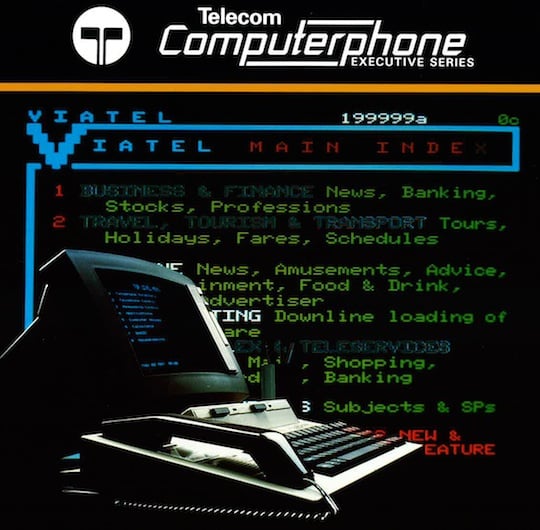This article is more than 1 year old
Sinclair's FORGOTTEN Australia-only micro revealed!
Behold the 'Telecom Australia Computerphone' in all its splendour
In early 1980s Australia if you wanted a home computer, chances are you were a Commodore user, a TRS-80 user or … a Commodore user. Famous British micros from the likes of Sinclair and Oric never really got a foothold down under, leaving the field to the Vic 20, C64 and the occasional local contender like Microbee.
British micro companies didn't appoint disties down under, so while the mother country enjoyed its golden age of home-grown computing, Australia was left to deal with inferior tat.
That changed in 1984 when Telecom Australia, at the time a sloth-like government instrumentality that was to customer service as Vogons are to poetry, was prodded towards greater innovation by regulators and government. And one of the things it decided to do was buddy up with ICL, which showed it a curious new product: the ICL One Per Desk (OPD).
The OPD was based on the ill-fated Sinclair QL, Sinclair's attempt to build a business computer. Sinclair worked with ICL and British Telecom to create the OPD, which included an integrated telephone and the ability to handle two phone lines – one for voice and the other for data. The product was also sold as the Merlin Tonto.
In Australia it was released as the Telecom Computerphone.

The Telecom Australia Computerphone, as depicted in an early brochure
Just how Telstra and ICL got together to Australianise the product has been lost to history, but Telstra historian Stefan Nowak provided this PDF of the speech delivered to announce it, that says Telstra scoured the world for such a product, found the One Per Desk and felt it better than anything on sale in the USA or Japan. The speech is a scream. Here's a portion, but you'll enjoy the full document too.

Nowak also leafed through other old Telstra marketing material for The Reg and surmises the machine “was directed towards the executive and small-to-medium business market.” He's also found it was sold by Telecom's PABX division, another piece of evidence showing it was business kit.
“It wrapped together several services like e-messaging and Viatel,” he added, “It was an advanced telephone, personal computer, view data terminal and messaging terminal.”
It was also expensive. The basic model with a monochrome monitor cost $AUD2,950, a packet at a time a new home on the fringes of cities like Canberra could be had for around $25,000 and the C64 sold for around $500. A printer added another $450 to the price while a colour monitor took the total to $4,400.
Another Telstra worker of the time who requested anonymity said he recalls Telstra sold a few to Toyota, who sent the devices out to dealers so they could look up spare parts inventories online.
Nowak says that seems like just the kind of application Telecom imagined at the time, but has no records of who bought them. Quite a few, he said, ended up on the desks of Telecom executives, who were given the machine so they could experience the bold new reality of online communications over the machine's 1200 bits-per-second modem.

Email, Australian-style, circa 1985
The Telecom Computerphone also seems to have made it to New Zealand, where computer collector Terry Stewart said he recently bought one that had seen use in the union movement.
Stewart's machine works and he's posted the video below of the Computerphone in action.
Telstra's Nowak said that by 1987 IBM and compatible PCs had come to dominate Australia's business market and the Computerphone was shelved. But the machine made a mark: Nowak says he's seen plenty of them in cupboards over the years, and that it is often recognised by baby-boomer visitors to the Telstra museum. ®
